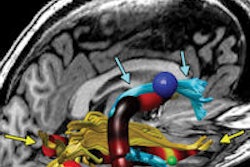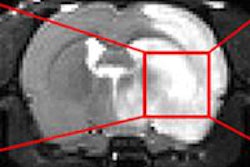Dr. Flore Viry, from Hôpital Saint-Antoine in Paris, and colleagues included 16 patients who received follow-up with both MR and ultrasound three months after digital flexor tendon surgery. Nineteen fingers and 25 tendons were imaged, and the reference standard was surgical results if the patient had undergone another operation or clinical status assessed by a senior surgeon six to nine months after surgery.
Average time between surgery and imaging was 130 days, according to Viry's group. Four tendons underwent another surgery due to frank rupture, and both MR and ultrasound detected these ruptures in all four cases. MR had false-positive results for two tendons, and ultrasound produced false-positive results in one of these two; both of these tendons underwent controlled mobilization early after surgery, at 24 days.
MR and ultrasound both work well when assessing postoperative flexor tendons, but care should be taken in cases when mobilization begins early, as it can suggest false-positive results for tendon rupture, the researchers concluded.



















